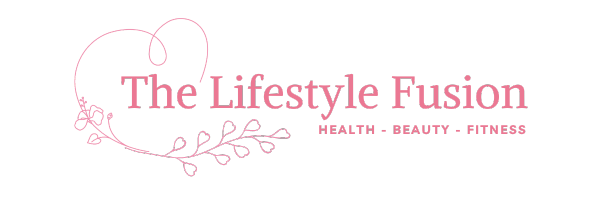Strength training can be a powerful tool to improve physical health. This is especially true for women older than 50. Strength training should be approached with a strategy tailored to this age group. This group faces unique opportunities and challenges, so it’s important to have a customized approach.
This comprehensive guide will explore the benefits of strength training, provide practical tips, and offer a detailed plan for women over 50 to begin their journey safely and effectively.
– Strength Training for Women Over 50 Years Old: Why It’s Important

As women age, maintaining physical health becomes increasingly vital. Strength training, in particular, plays a crucial role in ensuring women over 50 remain strong, healthy, and independent. Here are some key reasons why strength training is important for women in this age group:
1. Enhances Bone Health
As women age, the risk of osteoporosis and fractures increases. Strength training stimulates bone growth and increases bone density, which helps prevent these conditions.
2. Preserves Muscle Mass
Aging naturally leads to a loss of muscle mass, known as sarcopenia. Strength training helps maintain and build muscle mass, which is vital for overall strength, balance, and metabolism.
3. Boosts Metabolism
Increased muscle mass from strength training can boost metabolism, helping to manage weight more effectively. This is particularly important as metabolism tends to slow down with age.
4. Improves Balance and Reduces Fall Risk
Strength training enhances muscle strength and coordination, which improves balance and reduces the risk of falls, a common concern for older adults.
5. Strengthen Joint Health
Strong muscles support and stabilize the joints, reducing the strain on them during movement. This helps prevent joint-related issues such as arthritis by minimizing wear and tear.
6. Supports Mental Health
Exercise, including strength training, has been shown to reduce symptoms of anxiety and depression. It also boosts mood and overall mental well-being.
7. Promotes Independence
Maintaining muscle strength and mobility helps women over 50 perform daily activities independently, enhancing their quality of life.
– Getting Started: Tips for Safe and Effective Strength Training

Starting strength training can be intimidating, but with the right approach, it can be a rewarding and enjoyable experience. Here are some key tips to get started:
1. Consult a Local Healthcare Professional:
Before beginning any new exercise regimen, it’s important to consult with a healthcare professional, especially if you have any pre-existing conditions or concerns.
2. Start Slow:
Start with light weights and low resistance to safely build strength. Emphasize proper form and technique to minimize the risk of injury.
3. Warm-Up and Cool-Down:
Always start with a warm-up to prepare your muscles and end with a cool-down to aid recovery.
4. Progress Gradually:
Increase the intensity and weight gradually as your strength and confidence improve.
5. Listen to Your Body:
Pay attention to how your body feels during and after workouts. Rest if you feel pain or discomfort.
– Essential Strength Training Exercises

A balanced strength training routine should target all major muscle groups. Here are some foundational exercises to include:
1. Squats:
Squats are excellent for strengthening the legs, glutes, and core. Start with bodyweight squats and progress to using weights.
2. Push-Ups:
Push-ups are great for the upper body, particularly the chest, shoulders, and triceps. Modify by starting on your knees if needed.
3. Bent Over Rows:
This exercise targets the back muscles. Use dumbbells or a resistance band.
4. Planks:
Planks are fantastic for core strength. Start with holding for 15-20 seconds and gradually increase the duration.
5. Lunges:
Lunges strengthen the legs and improve balance. Begin with stationary lunges and progress to walking lunges.
6. Dumbbell Shoulder Press:
This exercise targets the shoulders and upper arms. Use light weights and focus on controlled movements.
– Sample Weekly Strength Training Plan

A structured plan can provide guidance and motivation. Here’s a sample weekly plan for beginners:
Day 1: Full-Body Workout
- Warm-up: 5-10 minutes of light cardio (walking, cycling)
- Squats: 3 sets of 10-12 reps
- Push-Ups: 3 sets of 8-10 reps
- Bent Over Rows: 3 sets of 10-12 reps
- Planks: 3 sets of 20-30 seconds
- Cool-down: 5-10 minutes of stretching
Day 2: Rest or Light Activity
- Light activity could include walking, yoga, or gentle stretching
Day 3: Lower Body Focus
- Warm-up: 5-10 minutes of light cardio
- Lunges: 3 sets of 10-12 reps per leg
- Glute Bridges: 3 sets of 12-15 reps
- Calf Raises: 3 sets of 15 reps
- Planks: 3 sets of 20-30 seconds
- Cool-down: 5-10 minutes of stretching
Day 4: Rest or Light Activity
- Incorporate rest or light activities like walking or yoga to allow muscles to recover and prevent overtraining.
Day 5: Upper Body Focus
- Warm-up: 5-10 minutes of light cardio
- Dumbbell Shoulder Press: 3 sets of 10-12 reps
- Bicep Curls: 3 sets of 12-15 reps
- Tricep Dips: 3 sets of 8-10 reps
- Planks: 3 sets of 20-30 seconds
- Cool-down: 5-10 minutes of stretching
Day 6: Rest or Light Activity
- Take rest days or engage in light activities like walking or yoga to aid muscle recovery.
Day 7: Active Recovery
- Gentle activities like walking, stretching, or yoga
– Nutrition and Recovery

Strength training places stress on the muscles, making nutrition and recovery critical components of a successful program.
1. Protein Intake:
Adequate protein is essential for muscle repair and growth. Include protein-rich foods like lean meats, beans, nuts, and dairy in your diet.
2. Hydration:
Stay hydrated by drinking plenty of water throughout the day, especially before and after workouts.
3. Sleep:
Aim for 7-9 hours of sleep per night to support muscle recovery and overall health.
4. Rest Days:
Incorporate rest days into your routine to allow your muscles to recover and prevent overtraining.
– Common Myths About Strength Training for Women Over 50

There are several myths about strength training that can discourage women over 50 from starting. Let’s address some of the most common ones:
1. Myth: Strength training will make you bulky.
Fact: Women typically do not have the same hormonal makeup as men to bulk up easily. Strength training helps build lean muscle, which is more likely to result in a toned appearance.
2. Myth: It’s too late to start strength training.
Fact: It’s never too late to start. Strength training can be beneficial at any age, improving muscle strength, bone density, and overall health.
3. Myth: Cardio is enough for weight loss and health.
Fact: While cardio is important, strength training plays a crucial role in maintaining muscle mass, boosting metabolism, and enhancing overall fitness.
4. Myth: Strength training is unsafe for older adults.
Fact: When done correctly with proper form and appropriate weights, strength training is safe and highly beneficial for older adults.
– Success Stories: Real Women Over 50 Who Thrived with Strength Training
Hearing about the experiences of others can be incredibly motivating. Here are a few inspiring stories of women over 50 who have embraced strength training and seen remarkable results:
1. Karen’s Transformation:

At 51, Karen began strength training to lose weight and improve her health. She lost 19 Lbs. in 8 weeks and gained a newfound confidence in her strength and abilities.
2. Mary’s Fitness Goal:

At 50 and 290 pounds, Mary Thoma struggled with daily activities and feared for her future. Joining Anytime Fitness and strength training thrice weekly transformed her life. She regained her health, mobility, and confidence.
3. Susan’s Success:

Susan’s life was a “nightmare” before she lost 215 life-threatening pounds. At 60s, Susan took up strength training after knee surgery. It helped her regain mobility, reduce pain, and feel more independent.
– Overcoming Challenges and Staying Motivated

Starting and maintaining a strength training routine can come with challenges. Here are five powerful strategies to stay motivated and overcome common obstacles:
1. Set Realistic Goals:
Establish achievable short-term and long-term goals to keep yourself motivated.
2. Track Your Progress:
Keep a workout journal or use a fitness app to track your progress and celebrate your achievements.
3. Find a Workout Buddy:
Exercising with a friend can provide accountability and make workouts more enjoyable.
4. Mix It Up:
Vary your routine to keep things interesting and prevent boredom.
5. Stay Positive:
Focus on the positive changes you’re making and be patient with your progress.
– Conclusion
Beginning strength training for women over 50 is a transformative journey towards improved health, enhanced quality of life, and greater independence. Taking the first steps by starting slow, emphasizing proper form, and gradually increasing intensity allows for a safe and sustainable strength training routine.
It’s crucial to prioritize nutrition and recovery, ensuring your body gets the fuel and rest it needs to grow stronger. Debunking common myths about strength training can empower you to embrace this empowering practice fully. Drawing inspiration from the success stories of other women can provide motivation and assurance that you, too, can thrive.
With determination, the right approach, and a commitment to consistency, you can unlock the numerous benefits of strength training. Enjoy greater energy, better mobility, and a sense of accomplishment that will carry you well into your golden years. Start today, and celebrate the strong, vibrant woman you are becoming.






